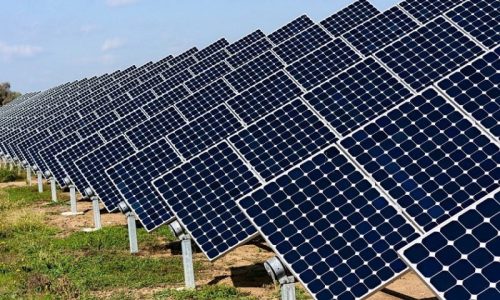Project Report For 1MW Solar Power Plant
Introduction
Project report for 1MW Solar Power Plant is as follows.
Solar power is a type of energy derived from the sun’s beams’ power and heat. It is renewable, making it a “green” energy source. Photovoltaic (PV) panels the enormous, mirror-like panels you’ve probably seen on rooftops, handheld solar devices, and even spacecraft are the most prevalent technique of capturing energy from the sun. These panels act as conductors, absorbing sunlight, heating up, and generating energy (and electricity).
Solar thermal power plants, on a bigger scale, use the sun’s energy to generate electricity. The heat from the sun is used to boil water, which then powers steam turbines. Thousands of people can be served by these plants.
A “Ground Mounted Solar Power Plant, Solar Power Station, or Energy Generating Station” is a solar power plant with a capacity of 1MW or more. These solar power systems generate a considerable amount of electricity, which is more than enough to power any business on its own or to sell to the government.

Process Of 1MW Solar Power
1MW On-grid Solar Power Plant: The 1MW solar plant has the lowest cost of any type of solar plant in an on-grid framework. This is due to the fact that solar panels and solar inverters are the only essential components required to set up an on-grid facility. Your 1MW solar power plant is on-grid if it is connected to the government grid and is governed by the net metering method.
1MW Off-grid Solar Power Plant: An off-grid structure functions similarly to a standalone solar power system. It provides free electricity to run your company while also storing excess energy for later use. A solar battery bank is necessary in addition to solar panels and the solar inverter to absorb unused power units and establish a useful energy reserve on-site for your business.
Solar batteries increase the cost of a 1MW solar power plant, but the advantages exceed the expenses. Your firm may survive in distant places where grid connection is expensive or unavailable by relying on solar batteries. By reducing your reliance on the federal grid, you may also reduce your power expenses.
1MW Hybrid Solar Power Plant: A hybrid framework is the best method to identify your location’s genuine solar potential and get the full benefits of this green technology. This type of solar plant combines the greatest features of on-grid and off-grid systems. Your hybrid solar plant benefits from net metering as well as the dependability of solar batteries. As a consequence, a 1MW solar power plant may assist you in achieving complete energy independence as well as ensuring a 24-hour supply of electricity, ensuring no downtime for your business.
Market Potential of 1MW Solar Power
The market for solar power plants was estimated to be worth US$ 197.23 billion in 2021 and is anticipated to reach US$ 368.63 billion by 2030, growing at a projected CAGR of 7.2% from 2021 to 2030.
Increased environmental degradation and government incentives and tax refunds to install solar panels are driving the growth of the solar energy sector. Furthermore, the reduced water footprint of solar energy systems has boosted their demand in the power generation sector.
The demand for solar cells has grown significantly as a result of an increase in rooftop installations, followed by an increase in architectural applications. In addition, the demand for parabolic troughs and solar power towers in the electricity generation sector is likely to drive up demand for concentrated solar power systems.
The market is divided into two categories based on technology: photovoltaic systems and concentrated solar power systems (parabolic trough, solar power tower, Fresnel reflectors and dish Stirling).
Monocrystalline, polycrystalline, cadmium telluride, amorphous silicon cells, and other solar modules are available. It is divided into three categories as per to its use: residential, commercial, and industrial.
The market is divided into four categories based on end-use: electricity generation, lighting, warmth, and charging. It is divided into four regions: North America (the United States, Canada, and Mexico), Europe (Germany, France, Italy, Spain, the United Kingdom, and the rest of Europe), Asia-Pacific (China, India, Japan, South Korea, Australia, and the rest of Asia-Pacific), and LAMEA (Latin America, Middle East, and Africa) (Brazil, South Africa, Israel, and Rest of LAMEA).
Silicon cells, both monocrystalline and polycrystalline, are in high demand, particularly in residential applications. Due to their low material costs, cadmium telluride and amorphous silicon cells are predicted to rise in popularity.
The demand for first-generation cells, which include monocrystalline and polycrystalline silicon cells, has risen due to an increase in solar applications. Due to continued R&D and improvements in solar panel efficiency, the third-generation cells market is likely to rise at a rapid pace.
The market has benefited from an increase in the installation of solar energy systems in architecture and residential applications. The geographical footprint of the solar energy industry, however, has had an impact, although rising R&D investments and the adoption of solar storage systems are projected to stimulate demand for solar energy systems.
1MW Solar Power Plant
Need Help?
Create 100% Bankable Project Report
